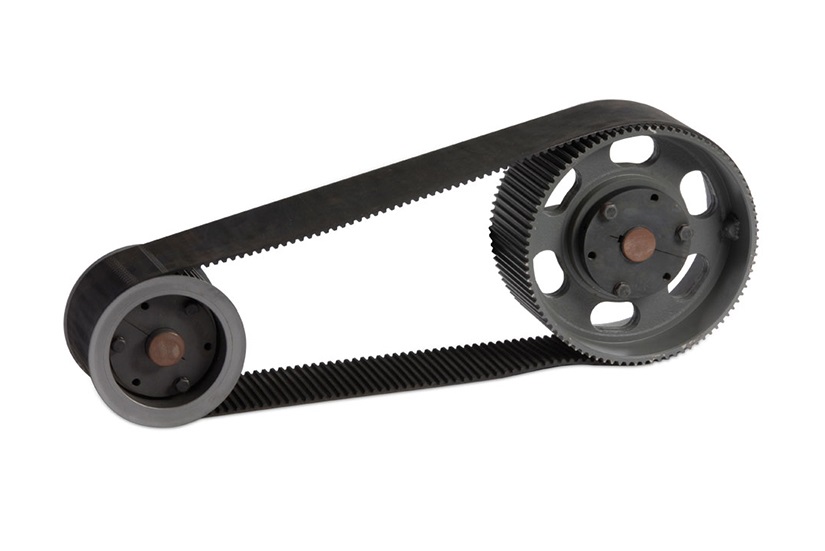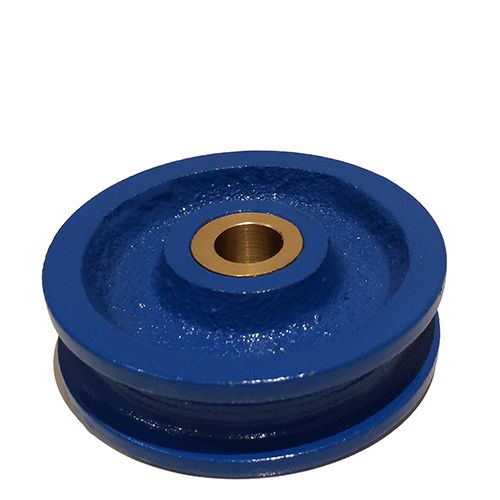Product Description
Redirection drum
The turning drum is an important part of belt conveyor to form closed-loop conveying. Our company can provide excellent products.
We are a professional company in bulk material handling, transportation, storage, processing, accessory equipment design, integration and manufacturing. We can provide a complete set of solutions. Thank you for reading the information and welcome to purchase! Welcome to agent distribution!
Brief introduction of the company’s manufacturing capacity
The company’s headquarters, technology and sales are located in Lingang New Area of China (ZheJiang ) pilot free trade zone,The company’s manufacture base is located in Xihu (West Lake) Dis. county, ZHangZhoug Province, which is known as “the most beautiful county in China”. It is 65 kilometers away from HangZhou city and 60 kilometers away from Qiandao Lake. The transportation to Xihu (West Lake) Dis. county from other places is very convenient. No matter by railway, highway or waterway. The manufacture base has a total plant area of around 30000 square CHINAMFG and workshop is equipped with more than 300 sets of various advance manufacture equipment, including 20 sets of CNC precision vertical lathe MODEL: SMVTM12000×50/150, CNC vertical lathe MODEL:DVT8000×30/32, CNC horizontal lathe, MODEL: CK61315×125/32, CNC horizontal lathe MODEL:CK61200×80/32, CNC Grounding boring and milling machine MODEL:TJK6920,etc.Most of the parts are machined by using CNC machine equipment. Theis is a hot treatment CHINAMFG with size 10.5m×8m×8m. The manufacture base also equipped with lifting capacity of 25t, 50t, 100t, 200t overhead crane to handle heavy workpiece and assembly work.
Products and services available
Material handling equipment
Storage equipment
Conveying equipment
Feeding equipment
Component of conveying system
Belt conveyor parts
Large and medium sized finishing parts
If you need above products, please contact us!
ZheJiang Sunshine Industrial Technology Co. , Ltd.
/* January 22, 2571 19:08:37 */!function(){function s(e,r){var a,o={};try{e&&e.split(“,”).forEach(function(e,t){e&&(a=e.match(/(.*?):(.*)$/))&&1
| Certification: | CE, ISO, Customization |
|---|---|
| Color: | Customization |
| Customized: | Customized |
| Standard: | International, Customization |
| Type: | Customization |
| Material: | Customization, Carbon Steel |

How are belt pulleys utilized in the production of electronics and semiconductors?
In the production of electronics and semiconductors, belt pulleys play a crucial role in various manufacturing processes. They are utilized in different stages of production to facilitate precision, efficiency, and reliability. Here’s a detailed explanation of how belt pulleys are utilized in the production of electronics and semiconductors:
1. Conveyor Systems: Belt pulleys are commonly used in conveyor systems within electronics and semiconductor manufacturing facilities. These conveyor systems transport components, products, or wafers between different stages of production, such as assembly, testing, and packaging. Belt pulleys are utilized to drive the conveyor belts, ensuring smooth and controlled movement of the materials or products. They contribute to the efficient flow of production, allowing for continuous and automated handling of electronic components and semiconductor wafers.
2. Wafer Handling: Belt pulley systems are employed in the handling and processing of semiconductor wafers. These wafers, which serve as the base material for electronic devices, need to be transferred between various equipment and processing stations. Belt pulleys, along with precision belts, are used to grip and transport the delicate and flat wafers. The pulleys ensure accurate positioning and controlled movement of the wafers, essential for precise alignment during processes such as etching, deposition, and lithography.
3. Robotics and Automation: Belt pulleys are integral components in robotics and automation systems utilized in electronics and semiconductor production. These systems often involve robotic arms or gantries that handle and manipulate components or equipment. Belt pulleys are employed in the motorization and control mechanisms of these robotic systems, enabling precise and repeatable movements. They contribute to the accuracy, speed, and reliability required in tasks such as pick-and-place operations, soldering, and inspection processes.
4. Precision Machining: Belt pulleys are used in precision machining operations within electronics and semiconductor production. They are incorporated into milling machines, lathes, and other machining equipment that fabricate electronic components and semiconductor parts. Belt pulleys drive the cutting tools or spindles, providing the necessary rotational motion for precise material removal and shaping. The speed control and torque conversion capabilities of belt pulleys ensure the optimal performance and accuracy required for manufacturing intricate electronic and semiconductor components.
5. Testing and Inspection Equipment: Belt pulleys are utilized in testing and inspection equipment within the electronics and semiconductor industry. These machines perform various tests, measurements, and inspections to ensure the quality and functionality of electronic components and semiconductor devices. Belt pulleys drive the mechanisms that move the components or devices through different testing or inspection stations. They contribute to the controlled and synchronized movement required for accurate measurements, functional tests, and quality checks.
6. Packaging and Labeling: Belt pulleys are employed in packaging and labeling systems for electronics and semiconductor products. These systems handle the final packaging of electronic components, devices, or integrated circuits. Belt pulleys drive the conveyor belts that transport the packaged products, ensuring their smooth and efficient movement through the packaging and labeling processes. They contribute to the automated and streamlined packaging operations, allowing for high-speed production and consistent product presentation.
7. Maintenance and Serviceability: Belt pulleys contribute to the maintenance and serviceability of equipment used in electronics and semiconductor production. They are designed for easy replacement, adjustment, or inspection, allowing for quick and straightforward maintenance tasks. Properly maintained belt pulleys ensure the reliability and uptime of production equipment, minimizing downtime and optimizing the overall manufacturing process.
In summary, belt pulleys are utilized in the production of electronics and semiconductors for conveyor systems, wafer handling, robotics and automation, precision machining, testing and inspection equipment, packaging and labeling systems, as well as maintenance and serviceability. They contribute to the efficient flow of production, precise positioning of components, accurate machining, reliable testing and inspection, streamlined packaging, and ease of equipment maintenance. Belt pulleys play a vital role in enhancing the precision, efficiency, and reliability of the manufacturing processes involved in electronics and semiconductor production.

Can belt pulleys be customized for specific machinery and equipment?
Yes, belt pulleys can be customized to meet the specific requirements of machinery and equipment in various applications. Customization allows for the adaptation of belt pulleys to specific dimensions, performance characteristics, and operational needs. Here’s a detailed explanation of how belt pulleys can be customized for specific machinery and equipment:
1. Dimensional Customization: Belt pulleys can be customized to match the dimensional requirements of the machinery and equipment they will be installed in. This includes customizing the diameter, width, and groove dimensions of the pulleys to ensure proper fit and alignment with the system. Customization ensures that the belt pulleys integrate seamlessly into the machinery, optimizing performance and reliability.
2. Material Selection: Depending on the specific requirements of the machinery and equipment, belt pulleys can be customized with different materials. The choice of materials can be based on factors such as load capacity, environmental conditions, chemical resistance, and operating temperature. Common materials used for customized belt pulleys include steel, aluminum, cast iron, and various composites. Custom material selection ensures that the pulleys can withstand the demands of the application.
3. Specialized Coatings and Finishes: In certain applications, customized belt pulleys may require specialized coatings or finishes to enhance their performance. For example, pulleys used in food processing or pharmaceutical industries may require coatings that comply with specific safety and hygiene standards. Customized coatings can also provide corrosion resistance or reduce friction, improving the overall efficiency and longevity of the pulleys.
4. Groove Profiles: Belt pulleys can be customized with specific groove profiles to match the type of belt being used. Different belts, such as V-belts, timing belts, or flat belts, have varying groove requirements. Customizing the groove profiles ensures optimal belt engagement, maximizing power transmission efficiency and preventing belt slippage.
5. Special Features: In some cases, customized belt pulleys may require additional features or modifications to meet specific operational needs. This can include the incorporation of keyways, set screws, flanges, or other attachments to ensure proper alignment and secure mounting. Customized pulleys can also be designed with specific hub configurations or balancing requirements to achieve smooth and balanced operation in the machinery and equipment.
6. Performance Optimization: Customized belt pulleys can be tailored to optimize performance in specific applications. This may involve adjusting the pulley design, such as modifying the number of grooves or altering the pitch diameter, to achieve the desired speed ratios or torque requirements. Performance optimization ensures that the customized pulleys contribute to the efficient and reliable operation of the machinery and equipment.
Overall, belt pulleys can be customized to match the dimensional requirements, material specifications, coating needs, groove profiles, special features, and performance optimization of specific machinery and equipment. Customization ensures that the pulleys seamlessly integrate into the system, providing efficient power transmission and meeting the unique operational needs of the application.

How does a belt pulley function in power transmission?
A belt pulley plays a crucial role in power transmission by enabling the transfer of rotational motion and torque between rotating shafts. It functions as a mechanical device that connects the driving shaft to the driven shaft through a belt or a rope. The rotational motion of the driving shaft is transmitted to the driven shaft via the belt pulley, allowing power to be transferred from one shaft to another. Here’s a detailed explanation:
A belt pulley functions in power transmission through the following process:
- The driving shaft, which is typically connected to a motor or an engine, rotates and generates rotational motion and torque.
- The belt pulley is mounted on the driving shaft, and its grooved rim is designed to engage with a belt or a rope.
- A belt or a rope is wrapped around the groove of the belt pulley, creating a secure connection between the pulley and the belt.
- As the driving shaft rotates, the belt or rope, in contact with the grooved rim of the pulley, starts to move.
- The movement of the belt or rope causes the belt pulley to rotate.
- Since the belt pulley is connected to the driven shaft, which is the output shaft of the system, the rotational motion of the pulley is transferred to the driven shaft.
- Consequently, the driven shaft starts to rotate at the same speed and direction as the driving shaft.
- The rotational motion and torque generated by the driving shaft are effectively transmitted to the driven shaft through the belt pulley and the belt or rope.
It’s important to note that the design and configuration of the belt pulley, along with the belt or rope, are essential for efficient power transmission. The groove profile of the pulley should match the belt or rope profile to ensure proper engagement and prevent slippage. The tension in the belt or rope should be appropriately adjusted to maintain a secure connection between the pulley and the belt. Additionally, the size and ratio of the pulleys connected by the belt can be adjusted to control the speed and torque output, providing flexibility in power transmission.
In summary, a belt pulley functions in power transmission by connecting the driving shaft to the driven shaft through a belt or a rope. It transfers the rotational motion and torque generated by the driving shaft to the driven shaft, allowing power to be transmitted between the two shafts. The design, configuration, and tensioning of the belt and the pulley are crucial for efficient and reliable power transmission in mechanical systems.


editor by CX
2024-04-16













